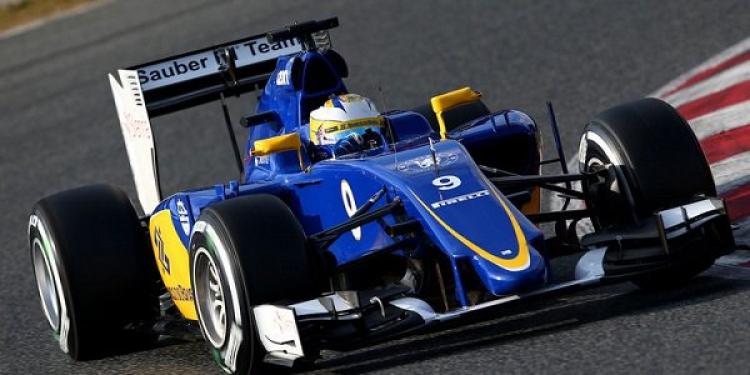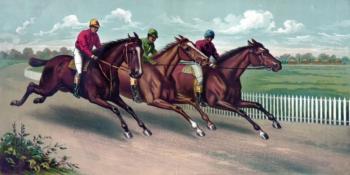Is Ericsson’s 16m GBP Gamble At F1’s Sauber A Sign Of Things To Come?
Posted: April 22, 2015
Updated: October 6, 2017

The Swedish driver Marcus Ericsson is battling hard to do well at Sauber, but perhaps the price he paid to join the team, some 16m GBP, is just a little too high for what he’s gained
Swedish gambling laws are a tad anachronistic, a monopoly controlled by Svenska Spel applying to the internet as well as the more traditional betting interfaces, however I feel sure at the start of the Formula 1 season numerous Swedes would have backed their fellow countryman Marcus Ericsson as he took to the track as part of Sauber in Australia. Of course with the dominance of Mercedes this would have been a triumph of national pride over reality, but if you’re Swedish it’s hard not to wish him well.
Come the checkered flag down under the 24 year old had managed to hang on to a creditable 8th place and get the first point-scoring finish for a Swedish F1 driver since Stefan Johansson finished 3rd in Portugal way back in 1989. This boded well both for Swedish F1 fans and indeed Sauber, however their hopes were just a tad tainted when he retired from the Malaysian grand prix, and only managed 10th in China and just 14th in Bahrain.
The Swede In Formula 1
• Marcus Ericsson at Sauber
• Paid 16m GBP to drive
• 5001.00 to win the title
His odds of winning the World Championship are, of course, infinitesimally small with the superbly useful ComeOn! Sportsbook rating his chances at 5001.00, however in just his second season in the circus of insanity that is Formula 1 he’s a bright hope for the future, not because he’s an accomplished driver who has fought his way up through the tiers of motorsport to reach this dream position, but because he’s a clear representation of what F1 drivers need to be.
You might hope that this would reference his driving career, his natural talent, his calm ability in front of the media’s cameras or even his desire to win, but unfortunately in the troubled Formula 1 there are very different considerations that are more important when choosing a driver and when Sauber announced he’d joined their team at the 2014 US Grand Prix it was clear from the outset that he’d gained the drive by coughing up cash.
A Clear Talent In Murky Waters
That one can purchase a drive in the very pinnacle of motorsport might surprise you, but whilst Ericsson came to Sauber with 16m GBP in his pocket for them, making his choice over other less well heeled drivers somewhat simple for the cash strapped team, they won’t let any rich fool step into a Formula 1 car (however much Robert Downey Jnr might have made it look otherwise in Iron Man 2) and Ericsson really does have the right experience.
Ericsson began, as so many do, in karting where natural talent is easy to spot, and having gained supporters with his performances, including former Indianapolis 500 winner Kenny Brack, it seemed only natural for him to move up to more serious forms of racing. He took to Formula BMW with a stunning debut at the first meet of the 2007 season at Brands Hatch coming third in the first race and winning the second of the day by a clear and significant margin.
He won that season’s title by 40 points and as part of his prize for winning got tests in Formula 3 and having proved himself in the car took a drive with Fortec’s British F3 team. His pace saw him take some poles and some podiums but miss out on any victories, even so his fifth place in the championship that year saw him join Japanese team TOM’S for the next season. He won the Japanese F3 championship and even won races guest appearing back in British F3.
2009/10 saw Ericsson move to Formula 2 bouncing between several teams over the next four seasons and displaying both quantities of luck and misfortune. Those that liked to bet on sports in Sweden back then might have both dreamed and despaired as his pace kept up with the pack but his fate seemed to be forever just that little bit too unlucky to be a real champion. However his great hunger for the life of a racing driver meant his eventual move to the top flight of F1 seemed inevitable.
Marcus Pays-To-Drive At Sauber

2014 saw him race for Caterham’s F1 team, and in the rarified atmosphere of the championship demonstrate the skills and ability he’d developed over his career thus far, and indeed as the season progressed and Caterham adjusted the car to his particular style of driving, small improvements were being made at the right pace to see him get ever better results, unfortunately, the ugly money monster was to raise it’s head and leave Caterham in administration.
Sauber were quite honest about the fiscal considerations behind his choice for them, with Monisha Kalterborn admitting; “We have to be open about it because I think if you look at the situation today in Formula One for private teams you have to consider these kind of arguments when you make a decision. If it is now good or bad, let’s leave that aside. The fact is that we did consider that as well, however he is not the only driver who has this kind of support so there’s nothing negative about it.”
The back of the grid, where Sauber unfortunately languish, is troubled these days, hampered by the massive costs involved in Formula 1, and whilst Bernie Ecclestone wrings his hands and pops all sorts of ideas out into the media melee, (and checks out the new Azerbaijan sites that have the European Grand Prix next year) the fact is that the teams with the most money behind them are the teams that are winning races. This has left many in the paddock gambling news stories of engine changes or component standardization will prove true and that they’ll be able to afford to keep racing.
Whatever changes get made to Formula 1, and given it’s slump in audience figures changes are almost inevitable, it is unlikely to get so much less expensive that the consideration of which driver to choose for your back or middle of the grid team will not include the amount of financial backing an individual can bring with them. Marcus Ericsson might be amongst the new crop of pay-to-drive F1 stars, but he will be by no means the last and that might not be the best way forward for Formula 1.












